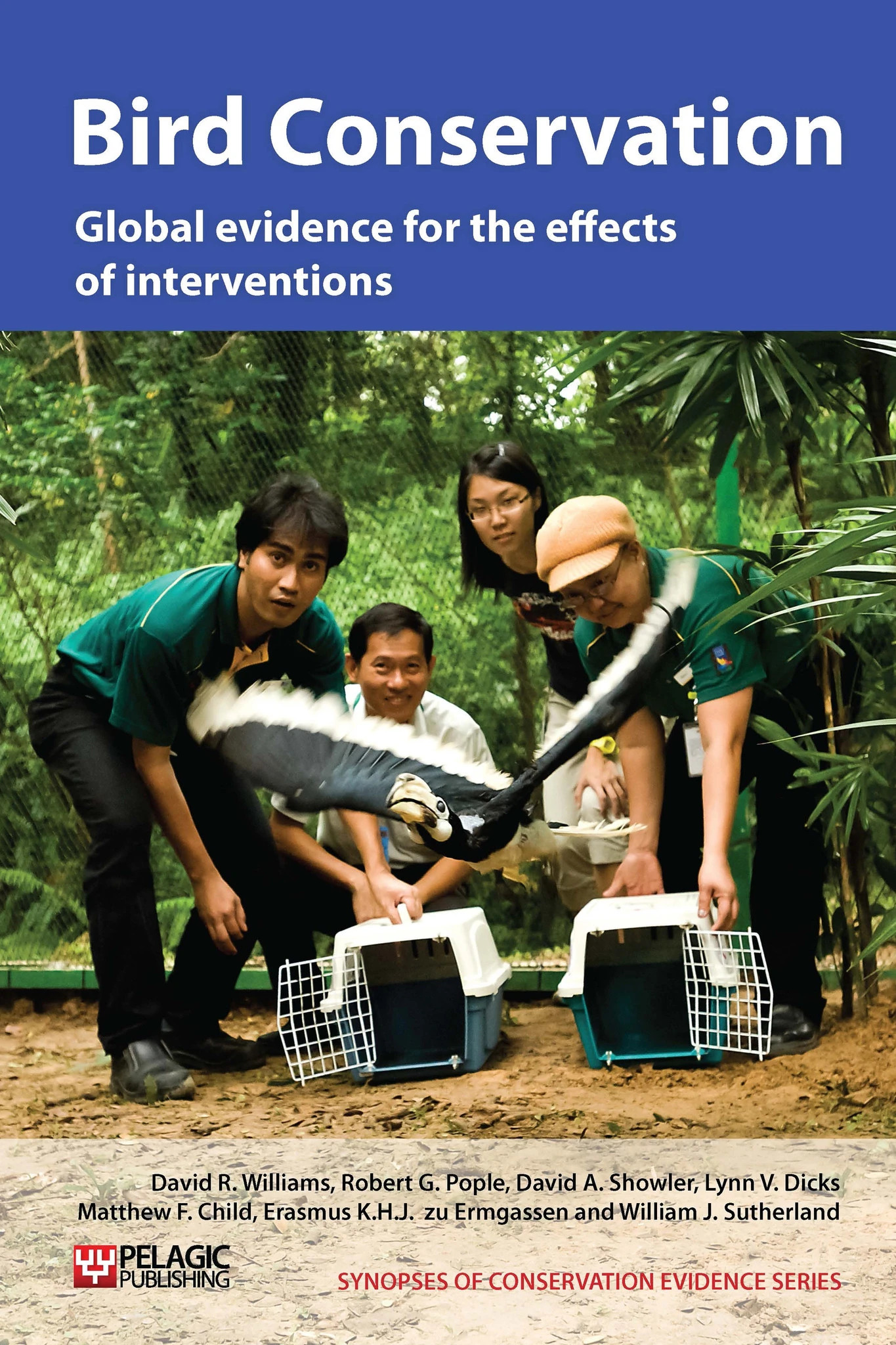Artificially incubate and hand-rear songbirds in captivity
-
Overall effectiveness category Likely to be beneficial
-
Number of studies: 4
View assessment score
Hide assessment score
How is the evidence assessed?
-
Effectiveness
51% -
Certainty
44% -
Harms
1%
Study locations
Supporting evidence from individual studies
A small study at a captive-breeding centre in New York, USA (Cade 1992), found that eight loggerhead shrike Lanius ludovicianus chicks removed from the wild and hand-reared from 8-9 days old survived. Two bred (see ‘Use captive breeding to increase or maintain populations’) and two of their chicks were removed, hand-reared and released. Both survived for several weeks until they disappeared.
Study and other actions testedA replicated study on Hawaii, USA, in 1993-4 (Kuehler et al. 1995) found that a total of 12 Hawaiian crow (alala) Corvus hawaiiensis nestlings were successfully artificially incubated and hand-reared from 17 eggs taken from wild nests. Three eggs were infertile, one failed to hatch due to ‘embryonic malpositioning’ and one of the 13 successful hatchlings died as a result of a yolk sac infection. This gave a total of 93% hatchability and 92% survival to 30 days. The release of some of these birds is discussed in ‘Release captive-bred individuals’.
Study and other actions testedA replicated ex situ study in Idaho, USA (Whitmore & Marzluff 1998), found that hand-reared corvid (ravens Corvus corax, American crows C. brachyrynchos and black-billed magpies Pica pica) chicks fed large amounts of food regularly grew faster and were healthier than those fed less food, or less regularly (e.g. ravens fed 40% of their weight every hour grew the fastest, those fed 15% of their weight grew the slowest; crows fed unlimited amounts every hour grew fastest, those fed every two hours grew the slowest; magpies fed unlimited amounts every 30 minutes grew the fastest). However, no feeding regime allowed chicks to grow as fast as wild-raised birds. Crows and magpies were most affected by feeding frequency, whereas ravens were more influenced by the initial amount of food offered. Survival three months after release was positively related to feeding frequency. Eggs were collected from the wild after 0-18 days of incubation and incubated at 37.5oC (crows and ravens) or 38.0oC (magpies) and at 31-69% humidity. Overall, 72% of 430 eggs hatched. After hatching, chicks were transferred to heated aquaria and fed with minced meat, egg, insects and dog food. This study is also discussed in ‘Use puppets to increase the survival or growth of hand-reared chicks’.
Study and other actions testedTwo replicated studies from 1995-9 at breeding centres in Hawaii, USA (Kuehler et al. 2000), found that hatching rates for artificially incubated wild-laid eggs were 93% for 29 omao Myadestes obscurus (a thrush) and 91% for 43 puaiohi M. palmeri (eggs consisted of both captive-laid and wild). Two out of five parent-incubated puaiohi eggs also hatched, whilst an additional 15 eggs were not viable. Both species were hand-reared, with 93% of omao and 92% of puaiohi chicks surviving until 30 days old (producing a total of 38 fledged chicks during 1996-8). The two parent-hatched chicks also survived. Eggs were incubated under a 37.2oC dry bulb and a 26.7-31.1oC wet bulb. Chicks were fed a high protein diet of insects, egg and fruit, initially provided every hour but with decreasing frequency as chicks grew. This study is also discussed in ‘Use captive breeding to increase or maintain populations’ and ‘Release captive-bred individuals’.
Study and other actions tested
Where has this evidence come from?
List of journals searched by synopsis
All the journals searched for all synopses
This Action forms part of the Action Synopsis:
Bird Conservation
Bird Conservation - Published 2013
Bird Synopsis





)_2023.JPG)














